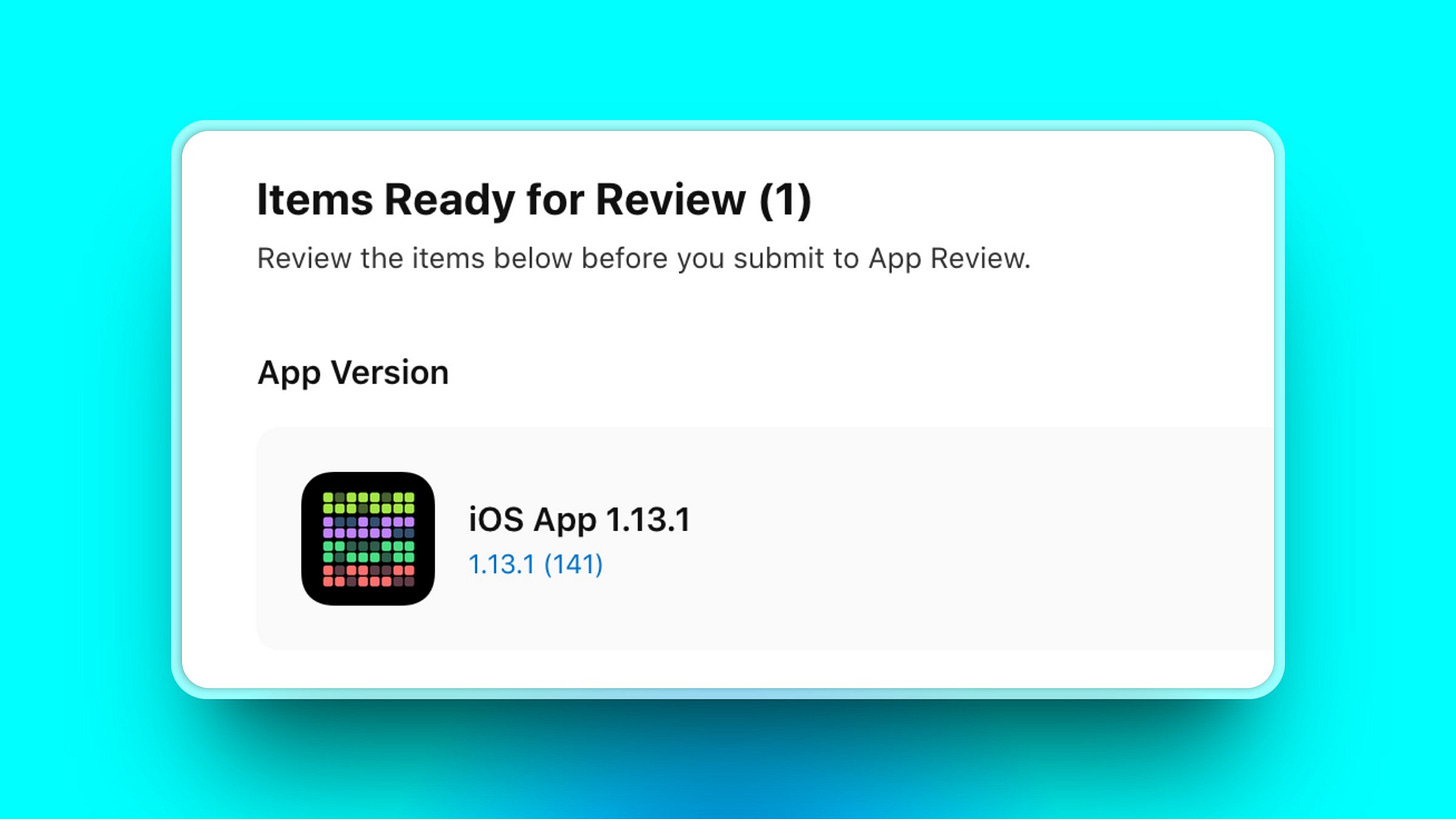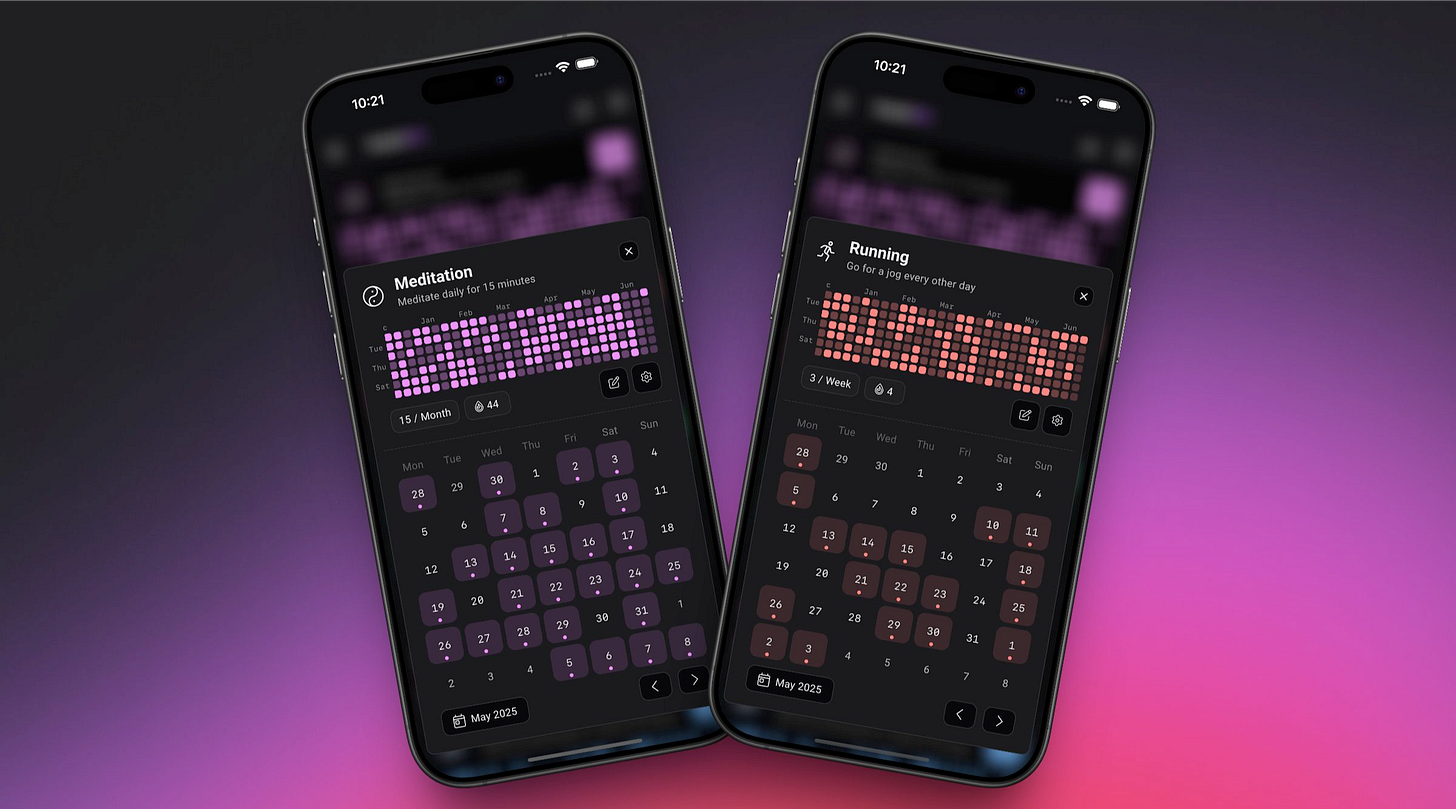Welcome back to another issue of my weekly indie log where I try to explain everything I did to improve my indie app business. Sorry about the 2 week pause on the regular indie log, I experimented with writing some more focused articles. If you missed the last two articles about my indie app stack, check them out here: Indie App Stack: Part One and Indie App Stack: Part Two.
📈 Business Updates
This week something really awesome happened: A couple of weeks ago I was invited to be a guest on Starter Story and got to share my whole journey as an indie developer. Now the video is out and I highly recommend to watch it if you're interested in indie hacking or my journey in general.
It was pretty cool to talk about everything that happened over the years, from when I first quit my job to start building my own apps, then went back to work for a while, and finally decided to quit again to focus on my own business. We also talked about how I handle app store optimization and what tools I use every day to keep things running smoothly.
The video definitely brought a lot of attention to HabitKit, which was really nice to see. It created a small but noticeable bump in downloads and revenue over the next few days. While it wasn't anywhere near the huge spike we get every New Year when everyone makes resolutions, it was still a great opportunity to reach new users and grow the app a bit more. These kinds of exposure moments are always exciting because you never know which new users might become long-term customers.
I really love these kinds of opportunities, especially during the quieter months of the year. Summer is typically slower for habit tracking apps compared to winter months where everyone is hyped about habit-tracking, so it's great when videos and mentions like this help counteract the seasonal decline in downloads and revenue.
🛠️ Development Corner
Last week I released HabitKit 1.13.1 with some much-needed updates to the development dependencies. I managed to get the app running on the latest Flutter release, upgrading from version 3.29.2 to 3.32.4, and I also updated all the package versions as far as possible. I was curious about the new Impeller rendering engine for Android, so I gave it a test run, but sadly the performance didn't feel great and I ended up having to disable it manually again. I will wait a couple of Flutter releases again and then decide whether I want to investigate this issue or not.
I also released HabitKit 1.13.2 this week. After I revamped the "Compact List" feature in version 1.13, I got some user feedback that the completion button's hit area had become too small again. So I made the buttons much bigger this time, and now people should have no problems tapping them.
I also made some progress on what will probably be the biggest HabitKit update ever: developing optional cross-device sync and cloud backup. I ran into some technical difficulties while setting up the sync mechanism (I'm using PowerSync + Supabase for this), but the PowerSync team was incredibly helpful and responded immediately after I posted a thread on their Discord server. Their support is really awesome!
I'm planning to take a break from HabitKit development next week. I want to spend the beginning of the week learning something new, for example diving into native iOS programming with SwiftUI. I'm thinking about building a small side project to get some hands-on experience with it. Then at the end of the week, I'm heading to London for a short vacation, so there won't be much actual work happening anyway.
💡 Indie Insights
I love being on the App Store and Google Play. Being an indie developer on these platforms has been one of the best decisions I made for my business, and I want to share some thoughts about this.
The biggest advantage for me is the marketing and discovery that you get basically for free. When someone searches for "habit tracker" on the App Store, my app shows up pretty high in the results and I didn't need to spend anything on ads to make that happen. The platforms have millions of people browsing and searching every day, which means there's always potential for organic discovery. This kind of exposure would be incredibly expensive and difficult to get if I was running my own website and trying to drive traffic there.
Another thing I really appreciate is not having to deal with all the payment headaches. The App Store and Google Play handle everything: processing credit cards, dealing with different currencies around the world and handling sales tax. I don't need to worry about setting up payment gateways, handling failed transactions, or dealing with chargebacks and refunds. As a solo developer, this saves me so much time and stress that I would otherwise spend on boring administrative work instead of building features.
Finally, I love that I don't need to worry about servers, hosting, or any of that technical infrastructure stuff. My app just lives on people's phones, and that's it (at least for now). No need to think about server costs, uptime monitoring, or scaling issues when more users sign up. The distribution is completely handled by Apple and Google, they have the bandwidth and infrastructure to deliver my app to millions of people instantly. This means I can focus 100% of my time on actually improving the app instead of maintaining backend systems or worrying about website performance.






